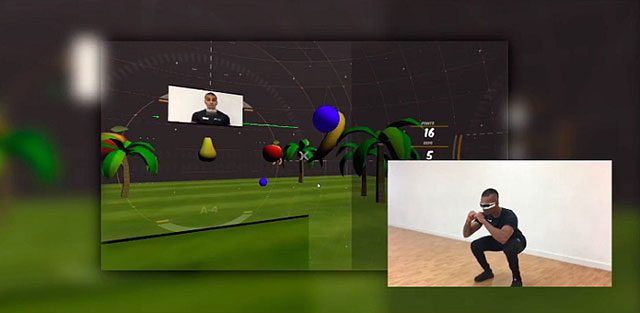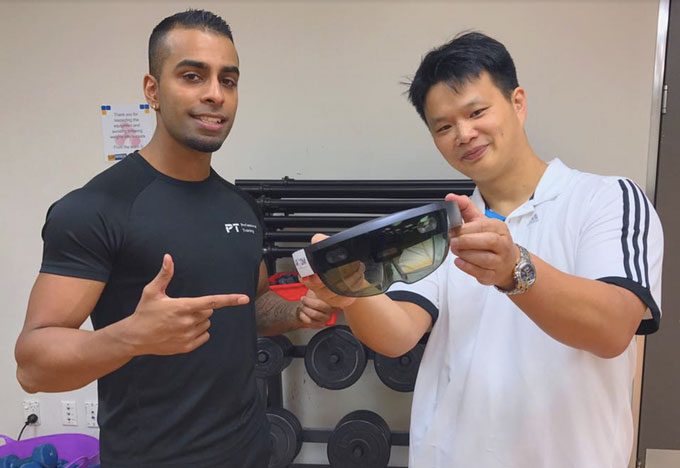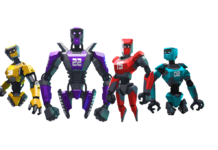I had the pleasure of sitting down with Chentur from ARX to learn more about what they are developing and how they see fitness and augmented reality going. ARX uses the latest Augmented Reality Technology to transform exercise from being an unmotivating chore into a fun and addictive gaming experience.
VRFI: Tell me about your background?
Chentur: Before I got into the fitness industry I was a civil engineer. After I left school, I didn’t know what to do. All I knew is I loved to train, and engineering got me money. Around the age of 23, I decided to follow my passion and got certified as a personal trainer and jumped into the industry. I started as a gym floor supervisor because I wanted to learn the industry from the bottom up. For three years I’ve been running my own business as a personal trainer. I love the personal element of training one on one but always loved technology and wanted to impact a larger group of people. I always thought about the online training and cookie cutter training plans that a lot of people are doing but it never felt right, and I couldn’t put my passion into it.
VRFI: How did the idea of mixing augmented reality and fitness get started for you?
Chentur: One of my clients at the time was Joe Chang who is also the founder of ARX. He was creating games on SteamVR and was always talking about it. During the development of his game called Phantasmal he gained about 22 lbs, so he came to see me. One day I had him on the treadmill warming him up for his next session, and we were discussing the whole hype on the Pokemon Go app. We were blown away by the fact that the app had over 50,000 downloads within the first 24 hours. That proved to us that there was a disruption in the augmented reality world and that by overlaying layers over normal reality was feasible and something people were interested in. We saw an opportunity there. Once a week after our training sessions we would catch up and discuss ideas on how we could add this technology to the fitness industry. During this time, I started talking with other clients and gym members to validate the idea. We took that feedback and started working after hours, which quickly turned into a full-time job. We invested in our first headset and started developing the software. About three versions later we started testing on all my clients and had them using three games which were centered around squats, press ups, and high knee workouts. The feedback was overwhelmingly positive, so we kept moving forward.
VRFI: How many games do you have and what are they?
Chentur: We have three games at the moment. Jump Squat Shooter, Press Up Shooter, and Runner.
Jump Squat Shooter is a game where you can look around in a 360 room, and there is fruit flying towards you. Everytime you complete a jump squat, it fires out a projectile towards where your crosshairs are lined up. The crosshairs are controlled by the headset and where you look. There are point incentives for the amount of fruit you can hit.
Press Up Shooter is a game with the same principle as Jump Squats, we just changed up the angle, so the user is looking downwards. Fruit is moving across the screen and every press up you do, you are firing a projectile towards the fruit. Sort of like you’re a helicopter hovering over land. We had done this with zombies at first but found out it was a bit to gamified and wanted to soften it up.
Runner is basically a high knee running exercise. It’s a straight runner game, sort of like temple run. As you gain momentum, different effects start happening on the screen. Eventually, we want to add other movements to the game. Maybe something like doing some burpees to get past a certain point or you have to jump to get over obstacles.
On all these games, the rep range is up to the client. We found that when we took this approach it was more immersive and they didn’t feel like they were doing exercise. That was the number one feedback we got from testing out this experience.

VRFI: You mentioned that you started creating a zombie game. Is that something you are currently working on?
Chentur: We had started working on a zombie game and had an early prototype of it but decided to move away and go with what we have. Eventually, we want to have a stockpile of games that the users can download what they want. Maybe then we will have a theme that is based around Halloween or something like that where we can theme some of our games.
VRFI: I noticed you are creating a mobile app. How is that going complement the hardware and software experience?
Chentur: It is currently under development, but I believe that it’s going to be the bread and butter of ARX. It will allow the user to view their workouts and share stats with their ARX friends. I believe that the social element is so important to keep you accountable to your goals. It allows you to show off what you’ve done, but it also creates a competition mindset that can be very valuable for motivation. An example of that would be, maybe you’re in bed too lazy to get to the gym and a notification comes up on your phone telling you that your mate is at the gym and he has issued you a challenge. Hopefully, that will spark you to get up and get to the gym for your workout.
VRFI: Tell me about how you are tracking the user data?
Chentur: In a nutshell, we are just using sensors and the accelerometer to track and record repetitions. We convert that into measurable processes so we can analyze the types of movements the user is doing. We then output that information on the screen for them. For example, if a user is doing squats we show them a counter of how many they’ve done.

VRFI: Who is this product for and how do you see this product being used in the real world?
Chentur: Right now it’s a basic tool that personal trainers can use and add value to their clients. We think it’s important to get into the market and establish a foothold on this technology and iterate on the product. Eventually, we want it to be available to the general public so anyone can use it in their home workout routines.
VRFI: Are you creating your own headset to go with your training games?
Chentur: We are working with a manufacturer, but as of right now we are using an Epson BT-200 Smart Glasses headset. Moving forward we will be using the Epson BT-300. We are big advocates at making adaptable software because we know the headsets are going to change over time and that technology will advance. We have been discussing creating an all in one package, but we are still pretty open in the headset space.
VRFI: How many people do you have working on this right now?
Chentur: Right now it just Joe and I and two developers. We have a .net architect working on all the backend and integration with Facebook. Bootstrapping is our model right now. We are trying to spend as least as possible to get us off the ground. We have looked at the opportunity of accepting funding, but I don’t think we need that at the moment but will revisit as we go along.
VRFI: Is there anything else you would like to share with the readers at VRFI?
Chentur: We are open to collaboration, and we are not this brand where we are shutting ourselves off to achieve what we are trying to achieve. I believe that the fitness industry is about collaboration and there are so many things I can see ARX conjoining with to create something even bigger than what we’ve dreamed. It might be a gym or another software out there. We are open to having those conversations.











